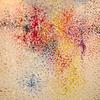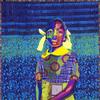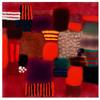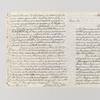High-End Fashion Collection Mimics Sea Structures Using 3-D Printed Digital Materials
- EDEN PRAIRIE, Minnesota
- /
- September 28, 2015
Julia Koerner partners with Stratasys to produce stunning 3D printed fashion range
Austrian architect and designer, Julia Koerner, has unveiled The Sporophyte Collection, comprised of three ready-to-wear, high-end fashion pieces. The collection, which is Koerner's first solo venture as a designer, was produced in collaboration with Stratasys on the Objet500™ Connex3 Multi-material 3D Printer using PolyJet-based digital materials.
With an interest in biomimicry, Koerner was inspired by the natural structures found in fungi and kelp. Such natural artifacts were 3D scanned and lead to the development of garments in 3D geometries; which were transferred to Stratasys in a .STL file. The three-piece collection, including the Hymenium Jacket, Kelp Jacket, and Kelp Necklace, were 3D printed in TangoBlackPlus and VeroBlack digital materials. This unique blend of flexible rubber-like materials allowed Koerner to create beautifully crafted pieces that emulate the movement of wearable fashion garments.
“It was very important that these intricate pieces maintained a flexible aesthetic,” said Koerner. “PolyJet digital materials enable designers to produce flexible pieces that behave more like a garment, allowing the material to work with the body as it moves about.”
Koerner designed The Sporophyte Collection specifically with 3D printing processes in mind. The complex geometric patterns of the jackets and necklace could not be fabricated with conventional forms of manufacturing.
“The dried kelp has a very intricate layering system and I wanted to bring this complexity into the lace-like structure, as seen in the Kelp jacket and necklace designs. There is no other technology available that could achieve the complexity, detail, and granularity of this design,” added Koerner.
The collection was the result of a three-month collaboration with Stratasys, although the garments themselves were 3D printed in a matter of days. Stratasys’ cutting edge PolyJet technology allows designers to create high-precision pieces in one build, simplifying assembly processes.
Koerner has worked with the likes of Iris Van Herpen and Ross Lovegrove on alternative 3D printed fashion collections throughout the years. She believes the advancements in 3D printing technology, particularly PolyJet digital materials, have revolutionized design possibilities in the fashion industry. In addition to the introduction of flexible materials, 3D printing technology has affected emerging trends in custom-fit clothing. Designers can utilize 3D scanners and 3D printing technology to develop tailored pieces for individuals.
Koerner adds, “I think it’s extremely exciting to be a part of this group of designers who are investigating into how fashion design can be developed with 3D printing. It’s my mission to take this a step further and produce customized, ready-to-wear fashion that are not only for museums, but also for the average woman to wear.”















